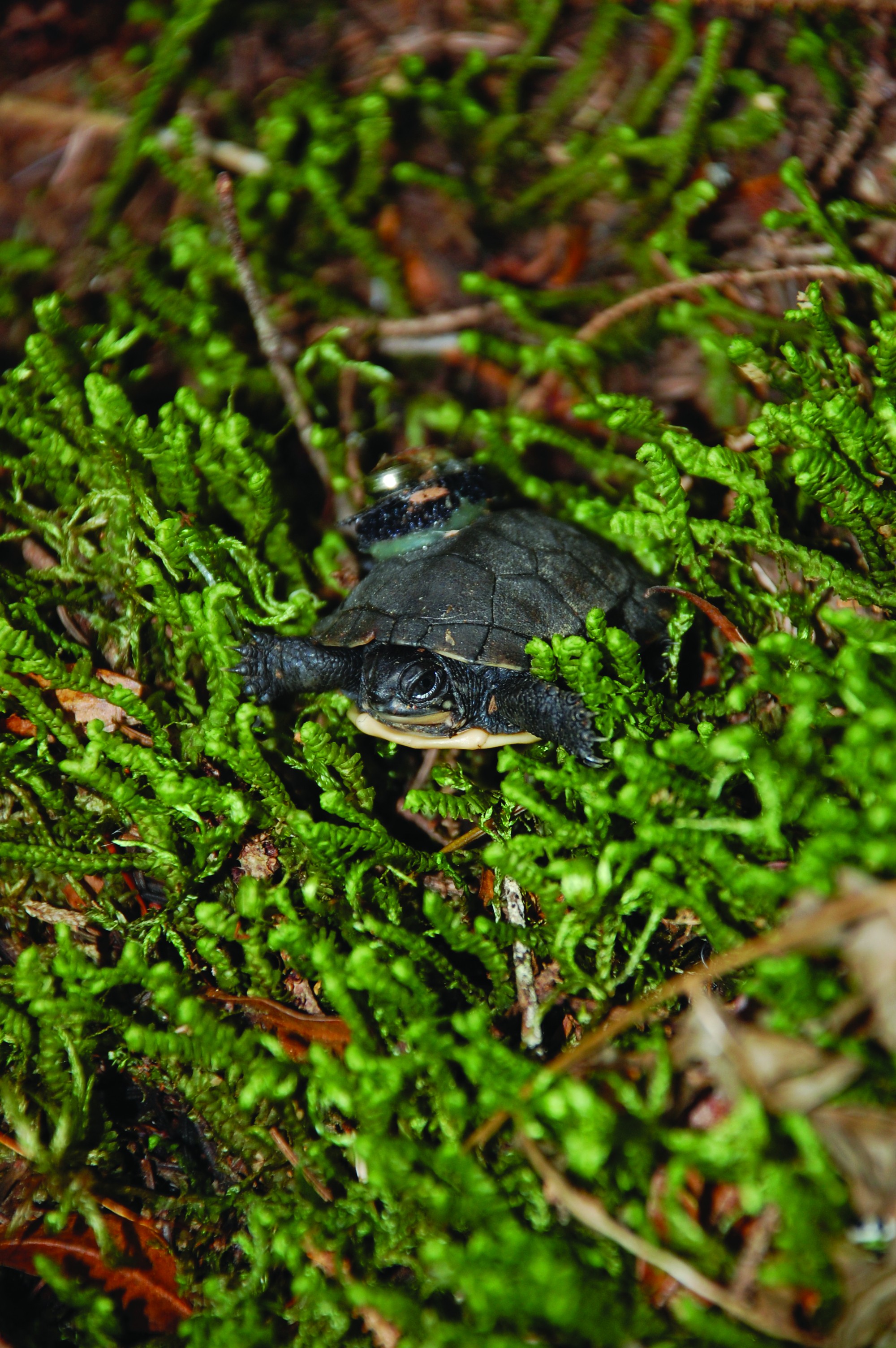Female Nesting Habitat
.jpg)
.jpg)
- Gently sloping sand, cobble, gravel, or slate lake shorelines and islands that are often south facing.
- Rock outcrops in the forest and along lake shorelines.
- Gravel pits and gravel roads.
Feeding and Basking Habitat
.jpg)
- Slow moving dark waters of lake coves, fens with stillwater streams, vernal pools and marshes.
- Often found in shallow areas with lots of aquatic plants, places to warm in the sun, and muddy bottoms. Associated with beaver-maintained wetlands.
- Peat moss, water lilies, and shrubs like Sweetgale, and Leatherleaf are often present.
Hatchling Habitat
 M Crowley.jpg)

- Emerge from underground nests in September and October.
- Usually overwinter in wetlands, temporary pools of water, or upland forested areas.
- Spend the winter buried down in the vegetation or underwater.
Adult Overwintering Habitat
.jpg)
- Shallow pools and slow flowing streams in wetlands.
- Can be buried under soft mud, sitting on the bottom, or suspended in the underwater vegetation.
* Protection of this habitat is critical to Blanding’s Turtle long-term survival.
Travel Corridors
.jpg)
- Can be found in a variety of habitats as they move to and from their feeding, nesting, and overwintering areas.
- These habitats include forests, open water, and roads.
- Road kill can seriously affect the Blanding’s Turtle population. Refer to the 'Motorized Vehicles' page (under 'How You Can Help on Your Land') for information about turtles and roads.


